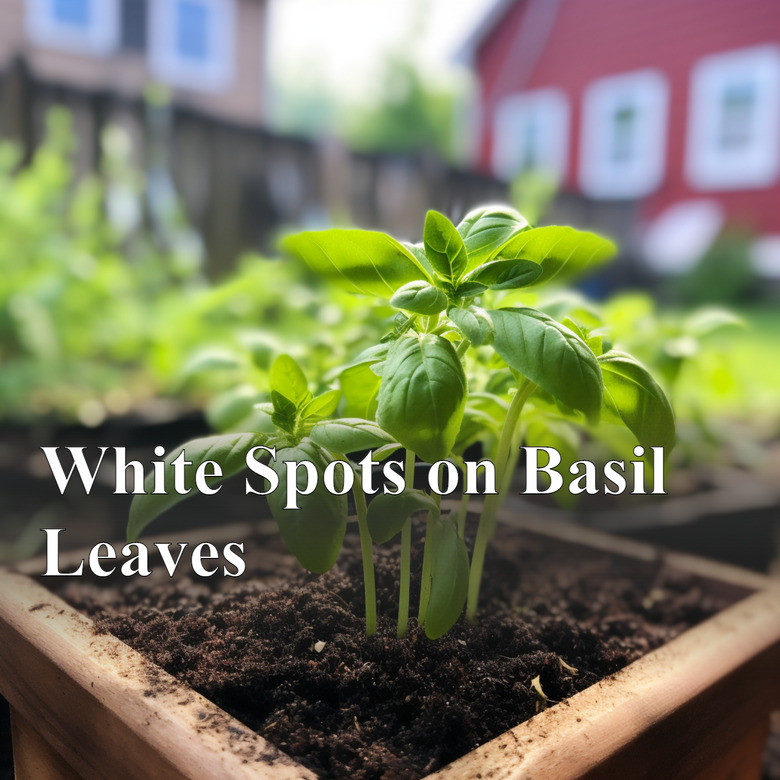White Spots On Basil Leaves
Basil is either an annual or short-lived perennial flowering plant native to many parts of Europe and Asia. It produces many leaf colors, from dark to light green and from pale lavender to almost black-purple. White spots on the leaf may be benign, or may signal a cultural problem.
White Insects
Colonies of tiny insects or even individual insects on basil leaves give them a spotty white appearance. Thrips are tiny insects the size and shape of a comma, and they're usually found individually on the leaves, often folding the basil leaves over themselves for protection from predators. Mites leave white webbing on the undersurface of the leaves. Aphid juveniles are often white, and may gather in colonies. Whiteflies congregate around the leaves, and fly up in a cloud when the plant is disturbed. Mealy bugs are white, cottony insects that congregate on the leaves and stems. All of these insects suck the juices from basil leaves, and most can be controlled by drenching the plant in insecticidal soap.
- Basil is either an annual or short-lived perennial flowering plant native to many parts of Europe and Asia.
- Thrips are tiny insects the size and shape of a comma, and they're usually found individually on the leaves, often folding the basil leaves over themselves for protection from predators.
White Fungus
Powdery mildew is a common problem with basil planted in areas with low light, low circulation and cool evening temperatures. It starts with patches or circles of white to gray powdery substance on the leaves, and can spread so that the leaves look as though they're completely covered with white dust. Oil sprays and copper fungicides work well for heavy powdery mildew infestation.
Natural Variegation
Some cultivars of basil, such as "Pesto Perpetuo" basil (Ocimum x citriodorum) have natural variegation, or spots of white on the otherwise green leaves. In these cases, the white should be on just about all of the leaves, and ought to follow a pattern. If the white areas all start to discolor or disfiguration of the leaf accompanies them, it is likely not variegation, but a disease or insect problem.
Considerations
Prevent most problems with basil, including both insect and fungal problems, with good cultural practices. Basil prefers light soil high in organic matter with good drainage, and plenty of ventilation and sunshine to discourage fungi and sheltered spots for insects. Adding fertilizers causes bursts of succulent or leafy growth that attracts both insects and fungi to come and feed on the new, relatively unprotected leaves.
- Powdery mildew is a common problem with basil planted in areas with low light, low circulation and cool evening temperatures.
